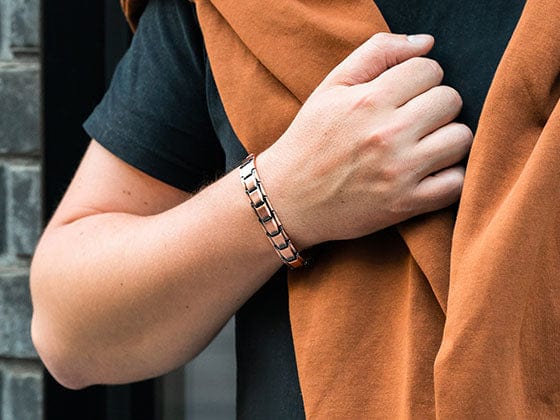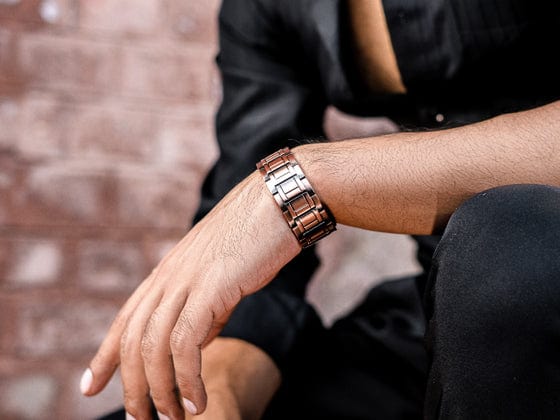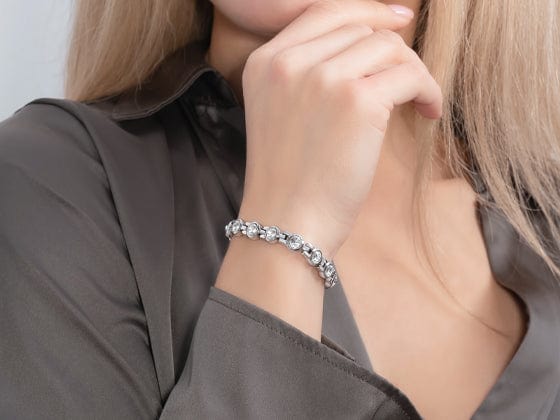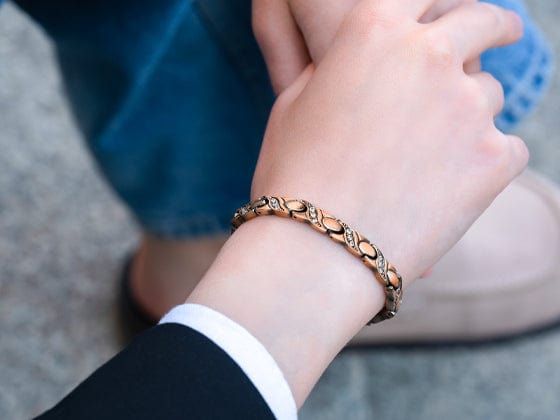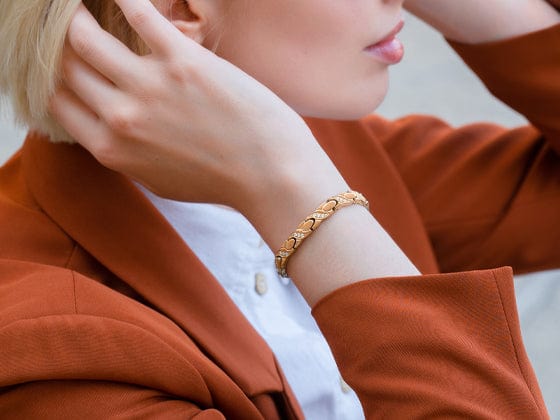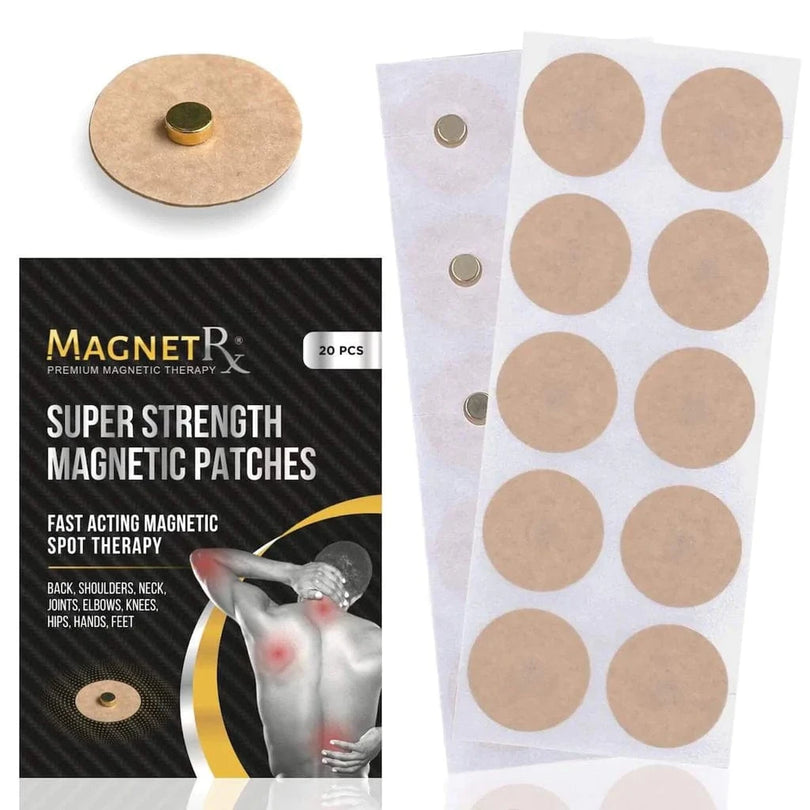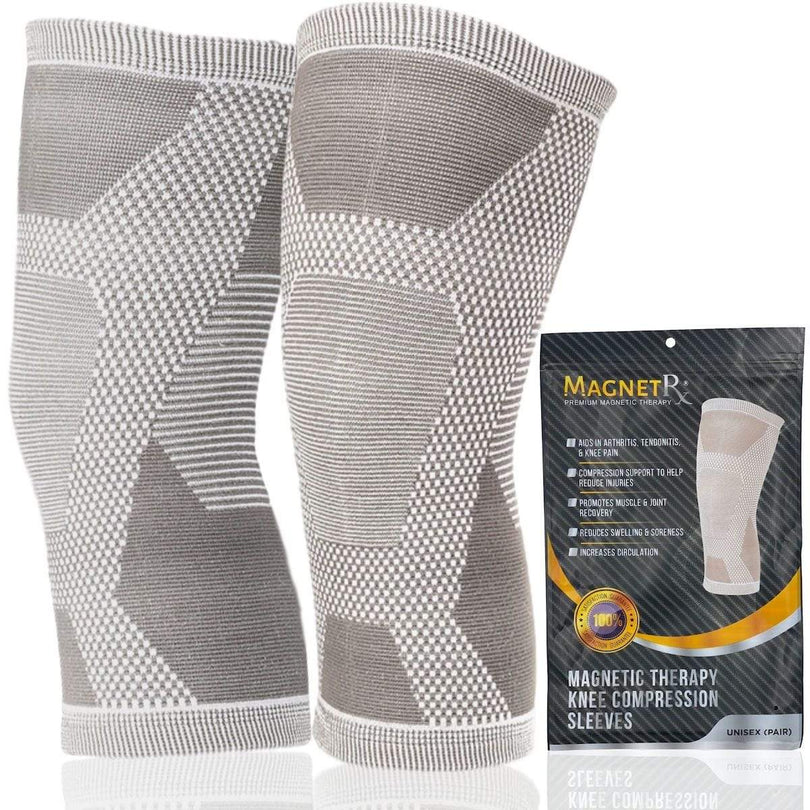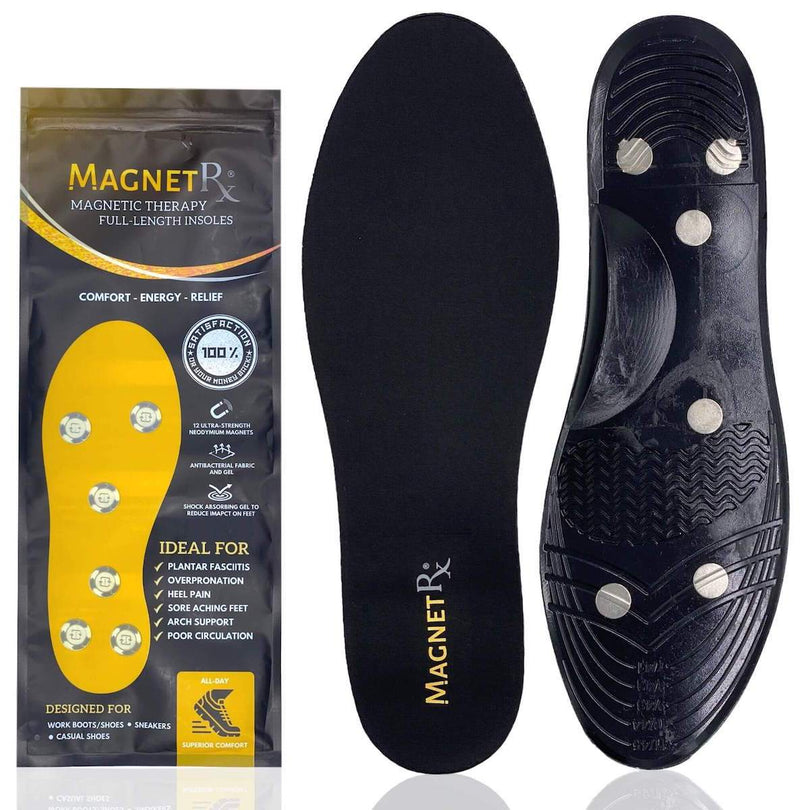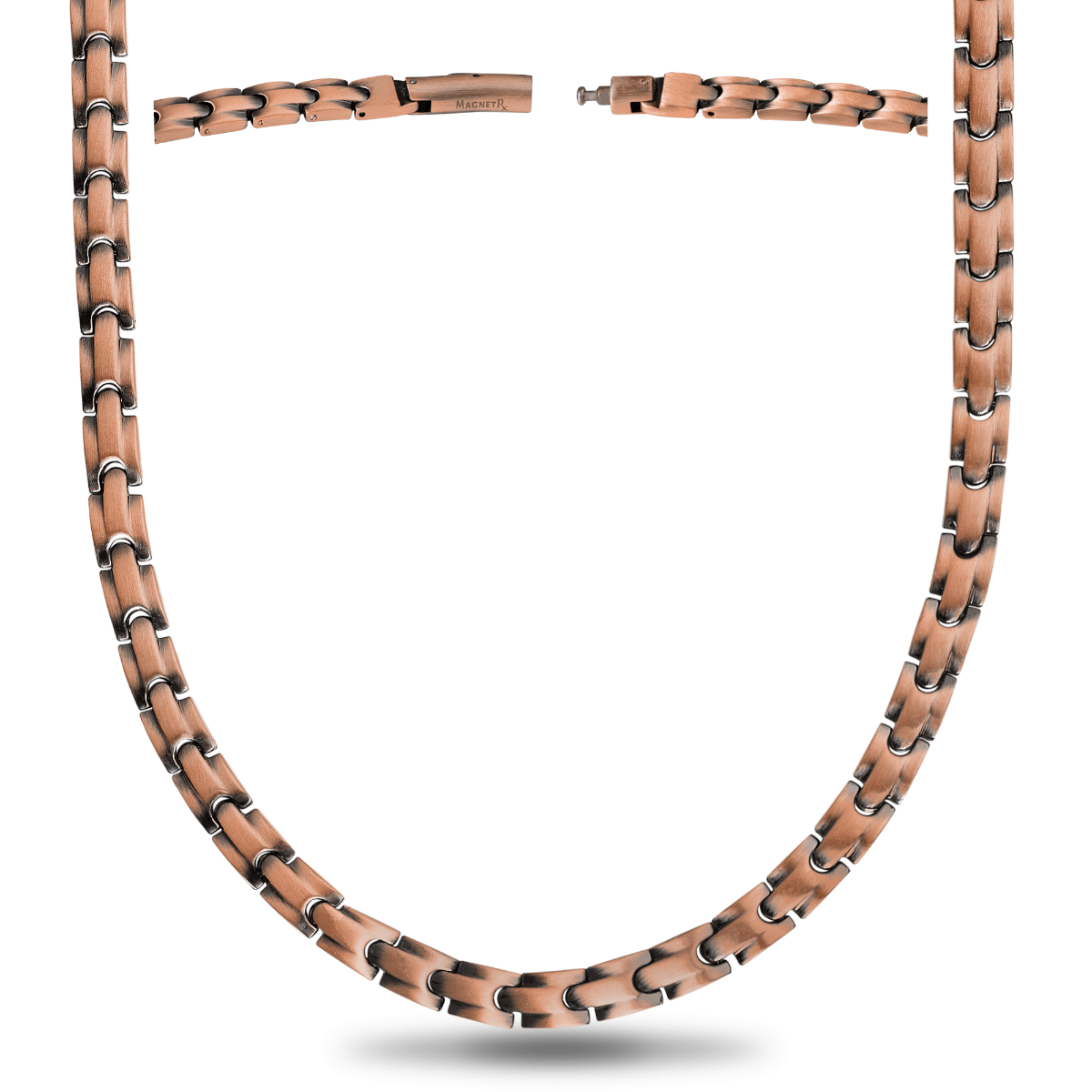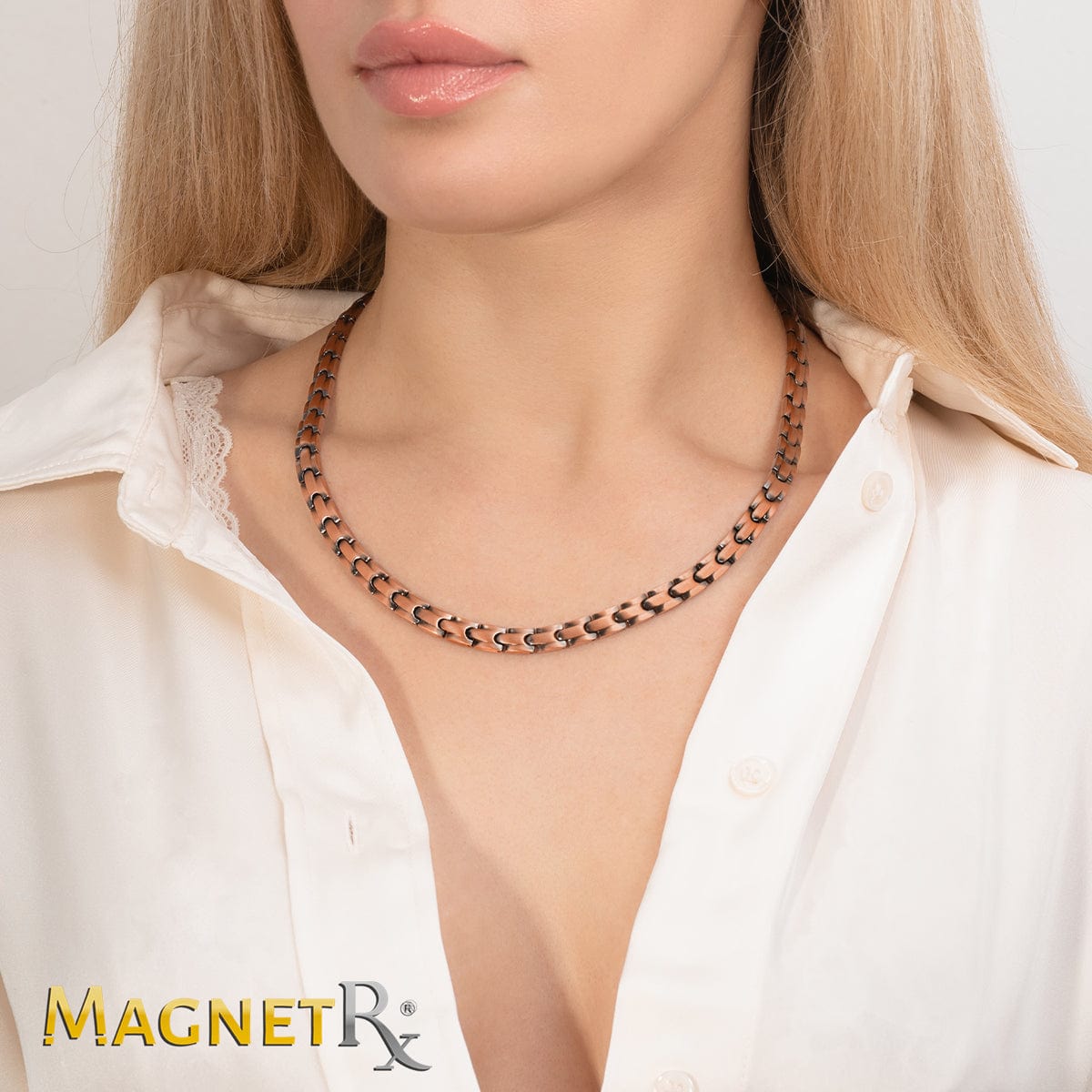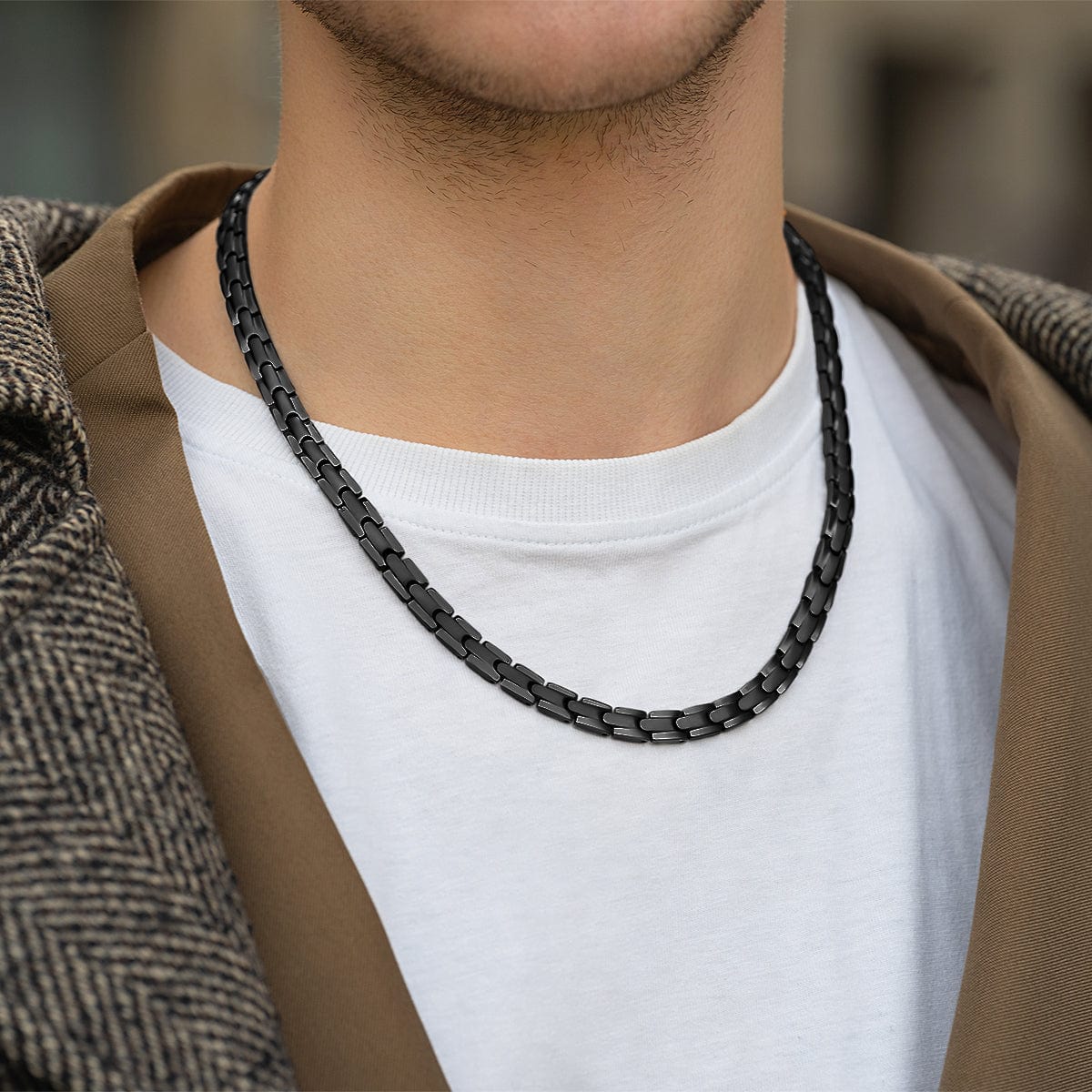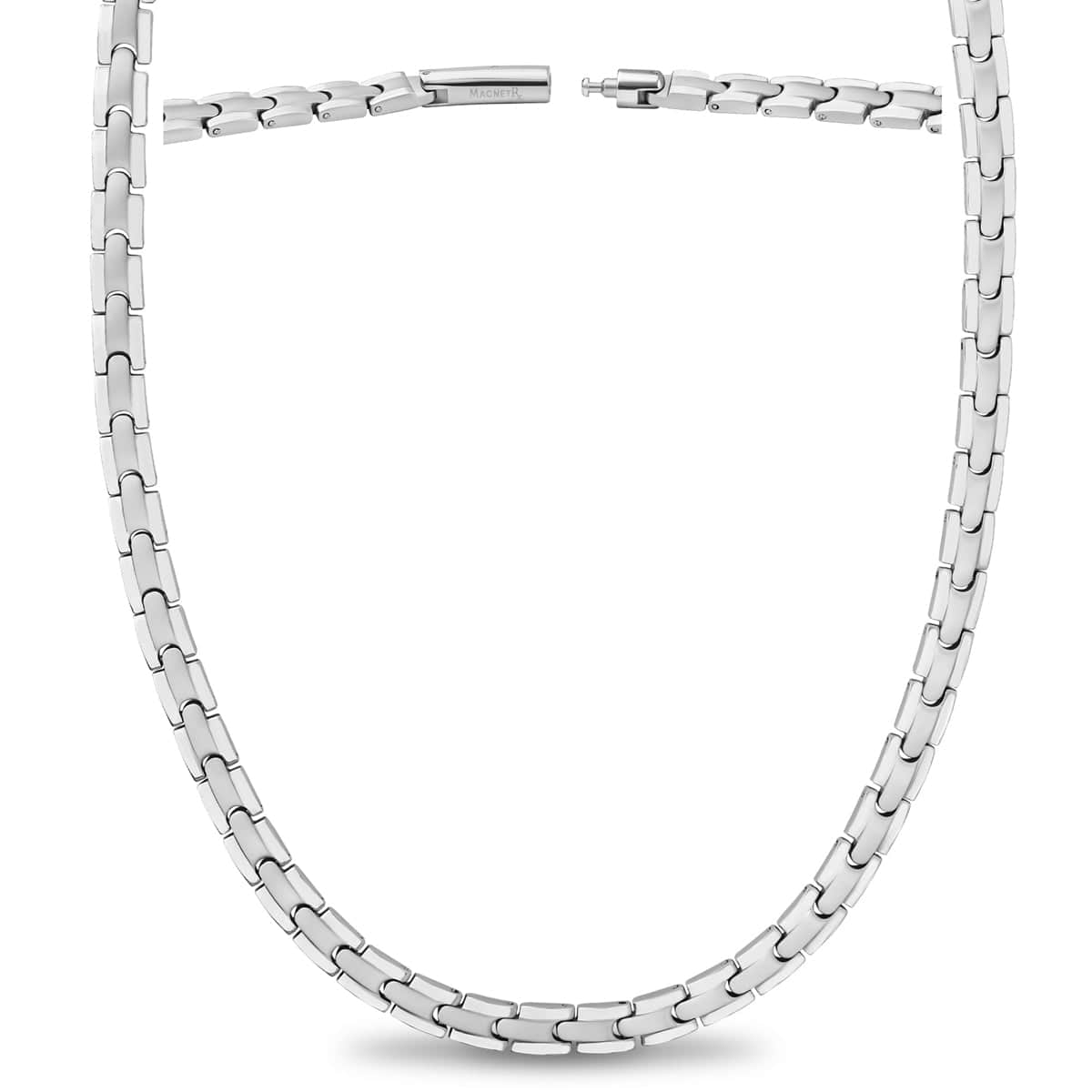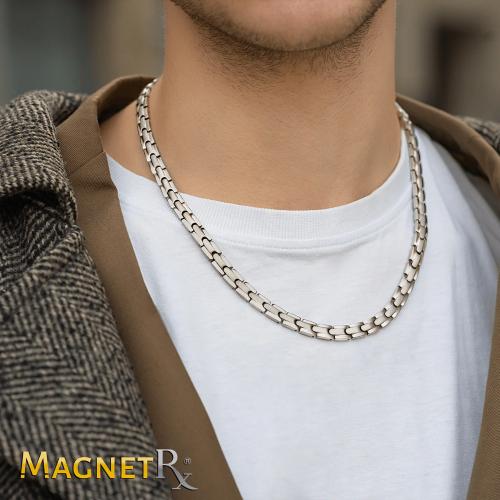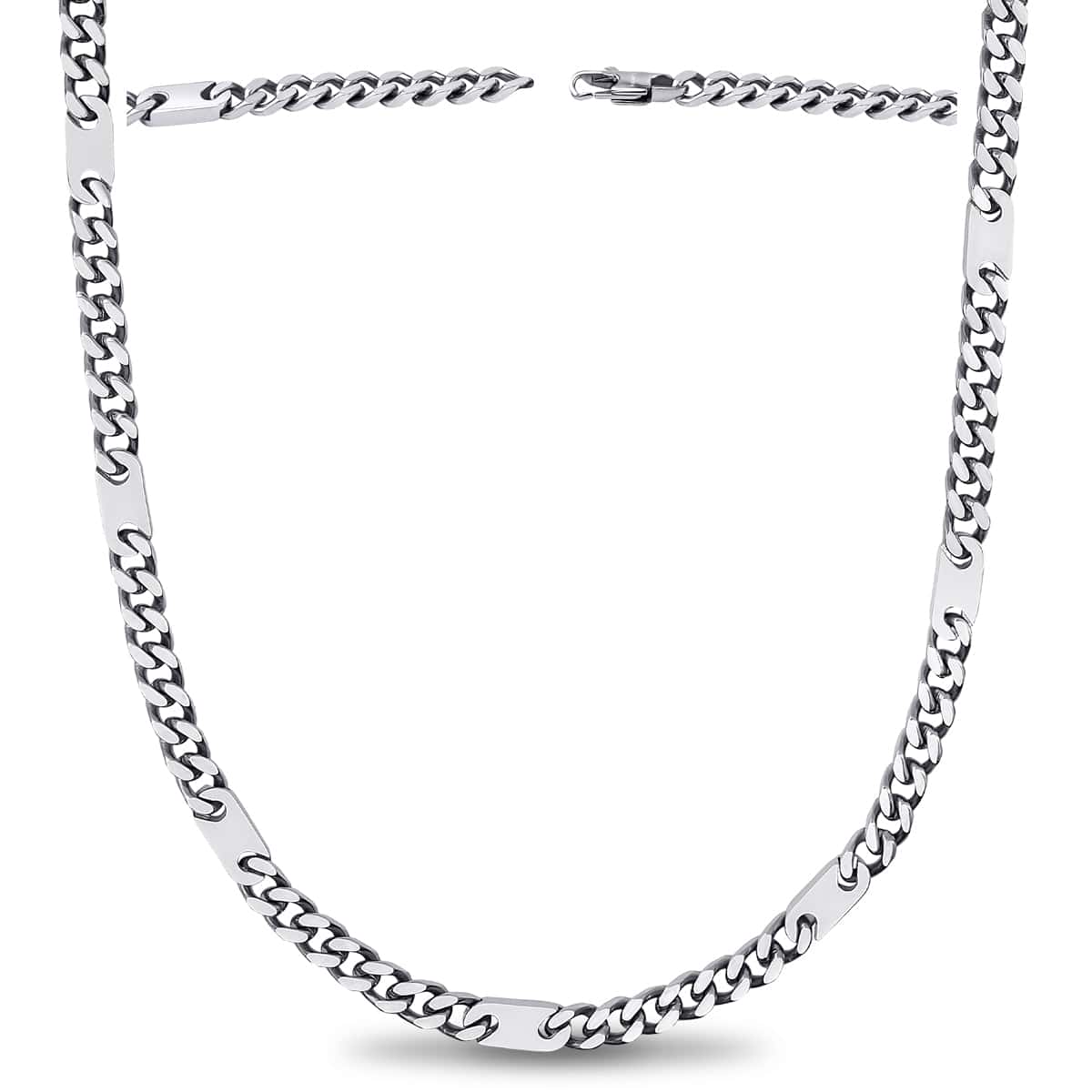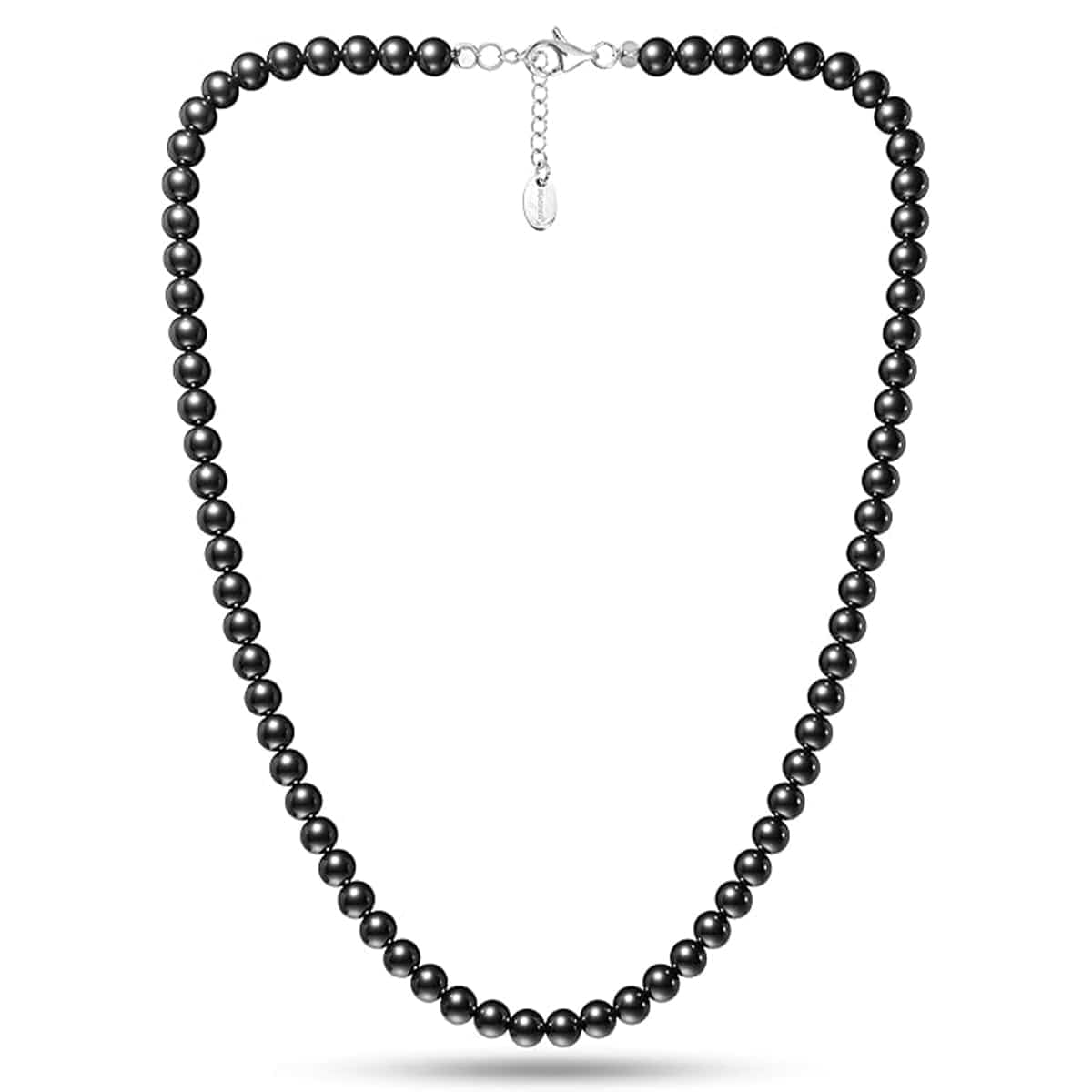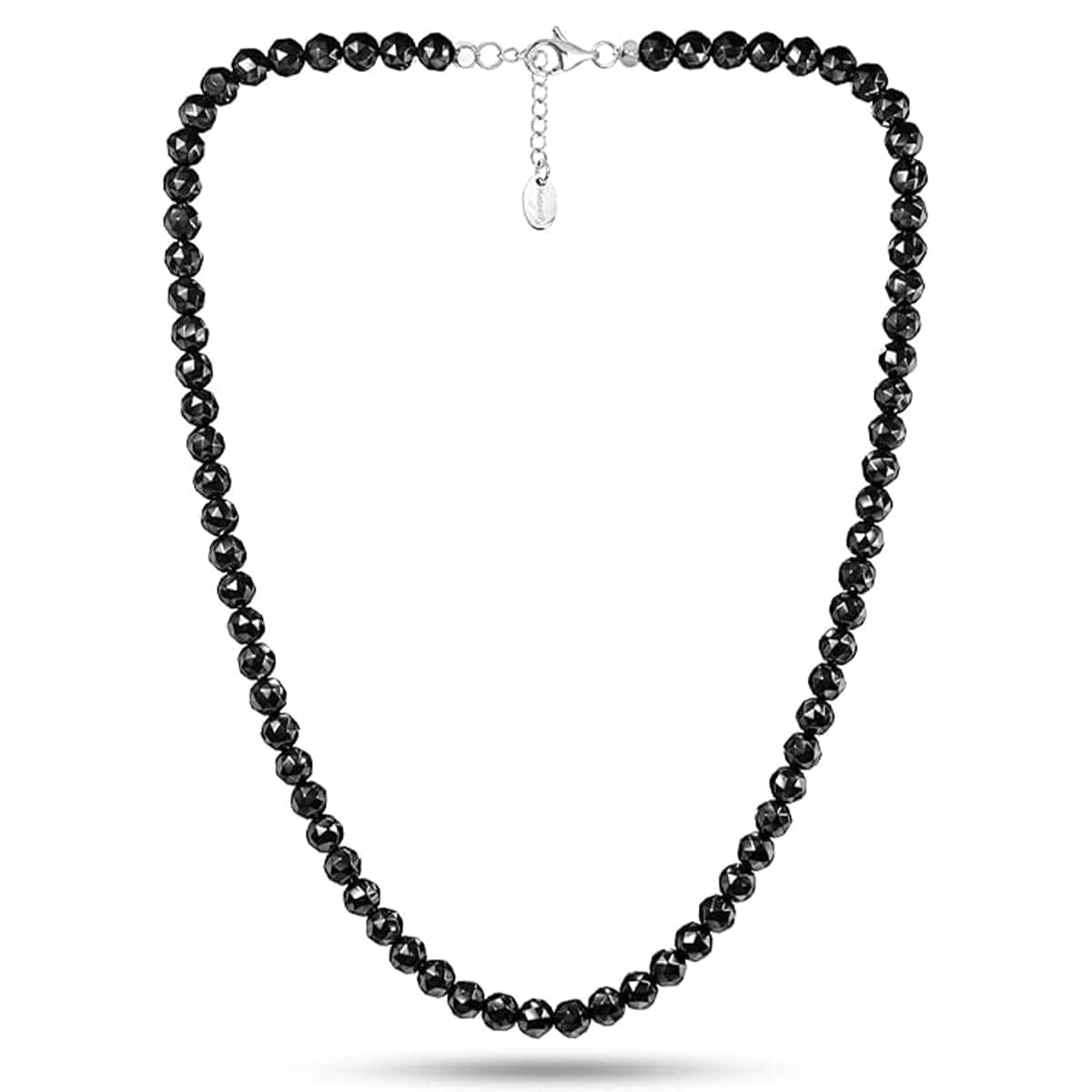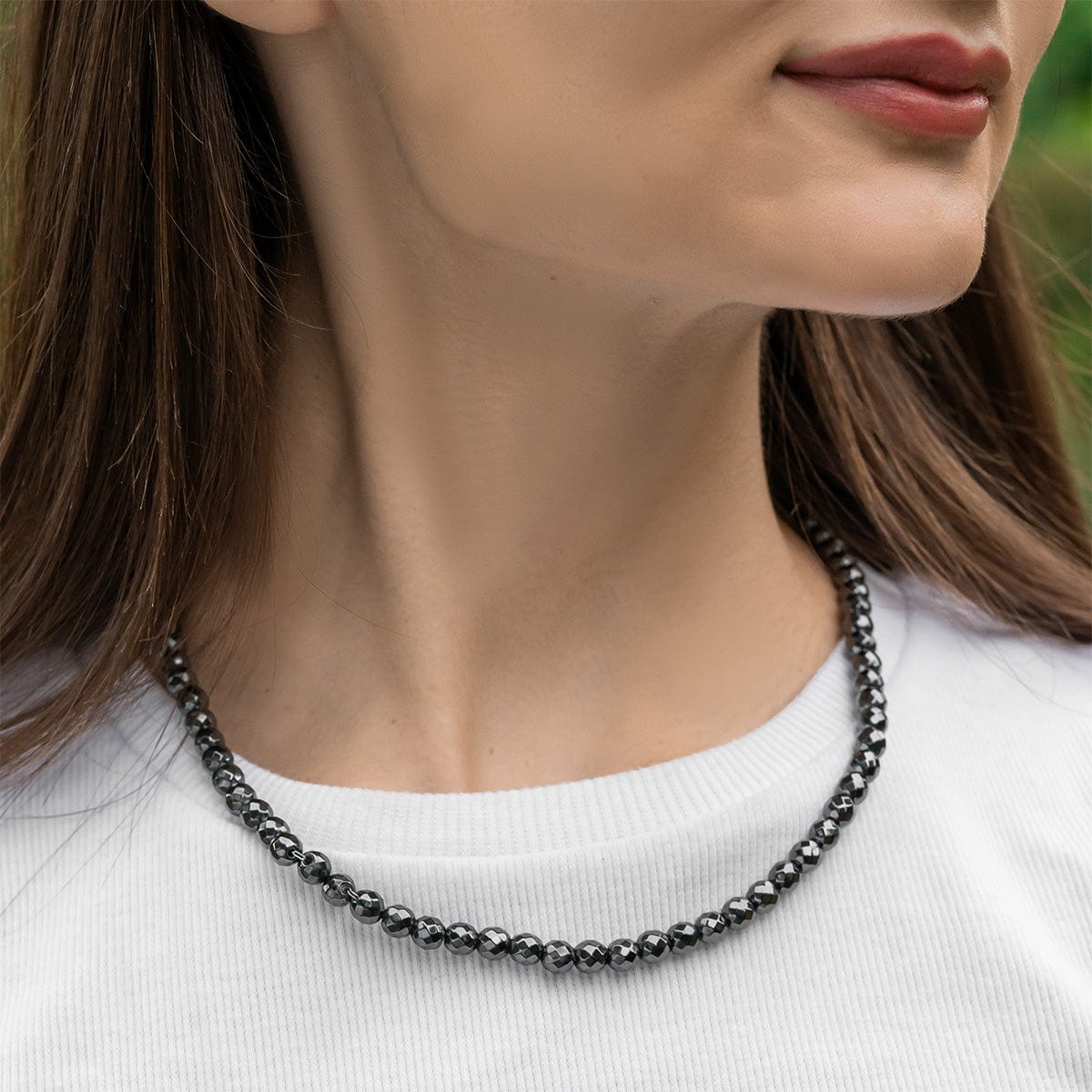Magnetic Necklaces
Finding the right magnetic therapy necklace could be as fastidious as looking for that one person that perfectly matches and complements you. Maybe you’ve gone to places and almost found that someone — well, just different versions of it. And there would constantly be something to complain about. A little too tight…too loose...too bland...always a little too wrong for you. Almost always but never really finding.
You don’t have to go all through these alone. We may not have the cure to your heartache, but we got something that can provide the right care you needed. This time, we got this for you!
Indulge yourself with our rich collection of MagnetRX® magnetic necklaces that are made with your needs in mind. Have the best of both worlds where you can heal and be stylish at the same time!
From materials used up to designs, we guarantee that our therapeutic magnetic necklaces are the best finds among other imitations on the market. Each magnetic necklace comes in classic tones and minimalist style—handcrafted from premium biomedical-grade materials ranging from titanium, stainless steel, hematite beads and jam-packed with powerful neodymium magnets. To add, each of these magnets is encapsulated with a custom clear sealant for enhanced resistance and protection from daily wear and tear. For security and slip-free wear, we utilize premium spring buckle clasp on our titanium magnet necklaces to securely stay on your neck.
Premium features of our crafts? The materials they’re made with add both to their aesthetic and therapeutic value. Let’s get to know them better, shall we?
The neodymium magnet is the strongest of its kind, making it an indispensable element in therapeutic applications. Prized for their healing properties, neodymium magnets, as biomagnetic therapy, are believed to dilate vessels, oxygenate white blood cells, lower acidity, aid in endorphin release, stimulate melatonin production, and revitalize the body’s energy. Each of these is said to be achieved by placing static magnets on the areas that need treatment.
Titanium magnetic necklaces are the most sought after magnetic necklace style. Titanium is hypoallergenic which makes it least likely to cause irritations when exposed to excessive sweat because it’s bio-compatible to all skin types. Greatly commended for its durability and tarnish-free reputation, it’s excellent for everyday use! Not only will this be compatible with your skin, but it’ll also be a sure fit for your needs. Claimed to deflect discouraging vibes, it’ll be your booze of zest! You’re gonna be head over heels with its contrasting appeal of strength and gentleness. Customers love the titanium magnetic necklace as their all-around athletic magnetic necklace for the light-weight and extreme durability!
Stainless steel magnetic necklaces are our kind of grow-old-with-you piece. It’s a fusion of strength, longevity, luster, resistance, and cost-effectiveness. What more to love about this is its impressive self-healing ability that is absent from its expensive and scratch-prone counterparts. Jewelry made out of it needs little maintenance—wash it with soap and water, and you’re done. Thought to block negative urges that can disrupt the psychological balance, this is the perfect companion to unwind from life’s clutter. Go for our variant stainless steel magnetic necklace! Have fun. Be well.
Known as a stress stone, hematite necklaces are claimed to be beneficial for emotional health. Though hematite magnets are not as powerful as neodymium magnets, they can be designed into beads which allows the magnets to be larger and fully wrap around the neck. The style exudes a believe-in-yourself charm that may be what you need if you’re looking for a daily push. Search no further. Our hematite magnetic necklace may be the one you’re looking for! Take courage. Beak away from self-inhibition and live life like never before.
At the end of the day, we'd always long for something worthy of us. Choose your perfect match among our collection of MagnetRX magnetic necklaces today!
Frequently Asked Questions and Answers
Do magnetic necklaces really work?
Magnetic necklaces are designed based on the principles of magnetic therapy, which involves using magnets to promote overall wellness. While some people report positive experiences when wearing magnetic necklaces, it's important to note that scientific research on the efficacy of magnetic therapy, including magnetic necklaces, is limited and inconclusive. As a result, we cannot make specific medical claims about their effectiveness.
Some potential benefits associated with magnetic necklaces may include:
Relaxation: Some users believe that wearing magnetic necklaces can help promote relaxation and reduce stress (Source: International Journal of Environmental Research and Public Health), contributing to an overall sense of well-being.
Improved energy levels: Some individuals claim that magnetic necklaces can help improve their energy levels and vitality, possibly due to the interaction between the magnetic field produced by the necklace and the body's natural electromagnetic field.
Fashionable accessory: In addition to potential wellness benefits, magnetic necklaces can also serve as stylish and unique accessories.
It's essential to approach magnetic necklaces with an open mind and realistic expectations, as individual experiences can vary. As the leading authority in the magnetic therapy field, MagnetRX offers a variety of high-quality magnetic necklaces designed to support your wellness journey. If you're interested in trying a magnetic necklace or other wellness products, explore our collections and choose the one that best aligns with your personal preferences and wellness goals. Always consult with a healthcare professional if you have any concerns or questions about incorporating magnetic necklaces into your wellness routine.
How to put magnetic clasp on necklace?
Magnetic clasps are a convenient and easy-to-use option for necklaces. Here's a step-by-step guide to help you attach a magnetic clasp to your necklace:
Gather your materials: You'll need a magnetic clasp, your necklace chain, a pair of jewelry pliers, and two jump rings (small metal rings used for connecting jewelry components).
Remove the original clasp: If your necklace has an existing clasp, carefully use the jewelry pliers to open the jump rings connecting the clasp to the necklace chain. Gently twist the jump rings open (do not pull them apart), remove the original clasp, and set it aside.
Attach the magnetic clasp: Take one jump ring and thread it through the loop on one end of the magnetic clasp. Then, thread the jump ring through the last link on one end of the necklace chain. Using the jewelry pliers, gently twist the jump ring closed, ensuring there are no gaps.
Repeat for the other side: Repeat step 3 for the other end of the necklace chain and the other half of the magnetic clasp.
Check the connections: Ensure that the jump rings are securely closed, and the magnetic clasp is firmly attached to the necklace chain.
Test the magnetic clasp: Bring the two halves of the magnetic clasp close together to ensure they snap together easily and securely. When you need to remove the necklace, gently pull the magnetic clasp apart to disconnect the two halves.
By following these steps, you can attach a magnetic clasp to your necklace, making it easier to put on and remove. If you're not comfortable doing this yourself, you can also visit a local jewelry store for assistance.
Are magnetic necklaces safe?
Magnetic necklaces are generally considered safe for most people to wear. They are designed based on the principles of magnetic therapy, which involves using magnets to promote overall wellness. However, there are certain situations where caution is advised:
Medical devices: If you have a pacemaker, defibrillator, insulin pump, or other implanted medical devices, it's essential to consult with your healthcare provider before wearing a magnetic necklace. The magnets in the necklace can potentially interfere with the function of these devices.
Pregnancy: Although there's no definitive evidence that magnetic therapy is harmful during pregnancy, it's best to consult with your healthcare provider before wearing a magnetic necklace if you are pregnant or trying to conceive.
Allergies: If you have allergies to certain metals, ensure that the necklace is made of hypoallergenic materials to prevent potential skin irritation or allergic reactions.
Children: Magnetic necklaces can pose a choking hazard for young children, and the magnets can be dangerous if swallowed. Keep magnetic necklaces out of reach of young children and consult with a healthcare professional before allowing older children to wear them.
Quality: Purchase magnetic necklaces from reputable sources, like MagnetRX, which is the leading authority in the magnetic therapy field. High-quality magnetic necklaces are more likely to be safe and effective.
As long as you consider these precautions and consult with a healthcare professional if you have concerns or questions, magnetic necklaces can be a safe and stylish accessory for those interested in exploring magnetic therapy.
Is a gold necklace magnetic?
Gold is a non-magnetic metal, which means that a pure gold necklace will not be attracted to magnets. Gold's non-magnetic property is one of the reasons it is valued for jewelry, as it is resistant to tarnishing and corrosion.
However, keep in mind that some gold jewelry, especially gold-plated or gold-filled items, may contain other metals in the alloy or core that could be magnetic. In these cases, the necklace might display some magnetic properties due to the presence of these other metals. For instance, some gold alloys contain nickel, iron, or cobalt, which are magnetic metals.
If you are specifically looking for a magnetic necklace, you can explore magnetic therapy necklaces, which are designed with magnets incorporated into the necklace's structure. MagnetRX, as the leading authority in the magnetic therapy field, offers a variety of magnetic necklaces to support overall wellness.
References:
Stress reduction: Magnetic therapy may help reduce stress and promote relaxation. It has been studied in the context of anxiety, sleep disorders, and stress-related conditions, although more research is needed. (Source: International Journal of Environmental Research and Public Health) https://www.mdpi.com/1660-4601/20/2/930


